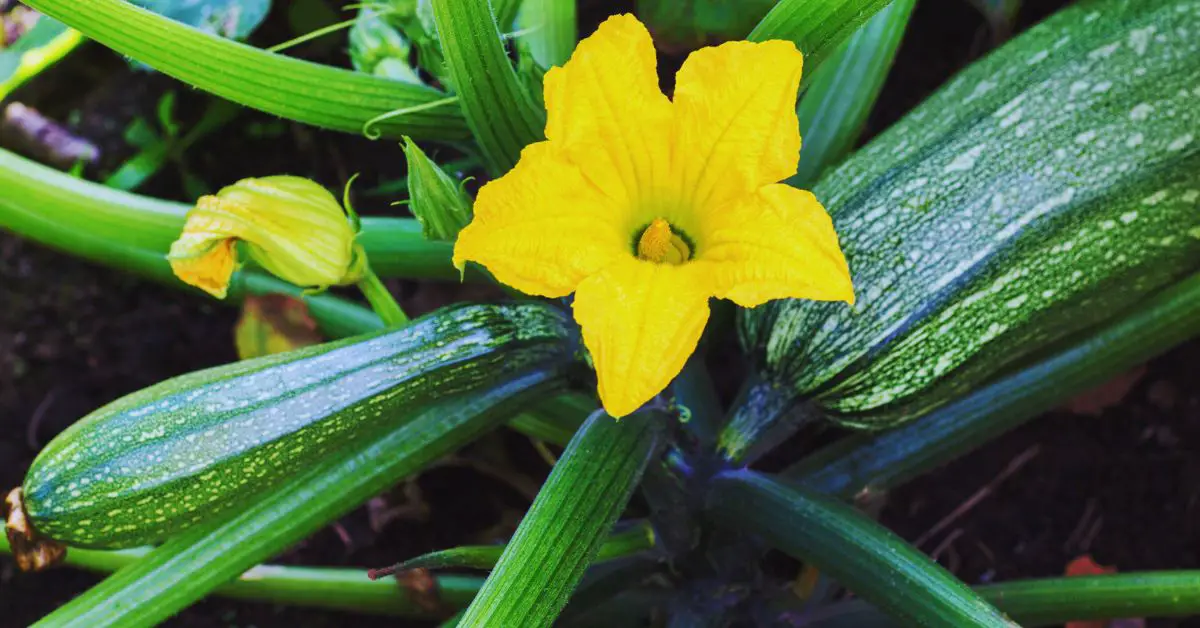As you consider starting your home garden, you’re likely wondering where to begin. You’ve probably envisioned a lush, thriving oasis in your backyard, but aren’t sure how to make it a reality.
Don’t worry, it’s easier than you think!
By understanding a few key factors, such as sunlight, soil quality, and plant selection, you’ll be well on your way to creating a beautiful and productive garden.
But that’s just the beginning – there are many more secrets to revealing a successful home garden, and we’re about to explore them together.
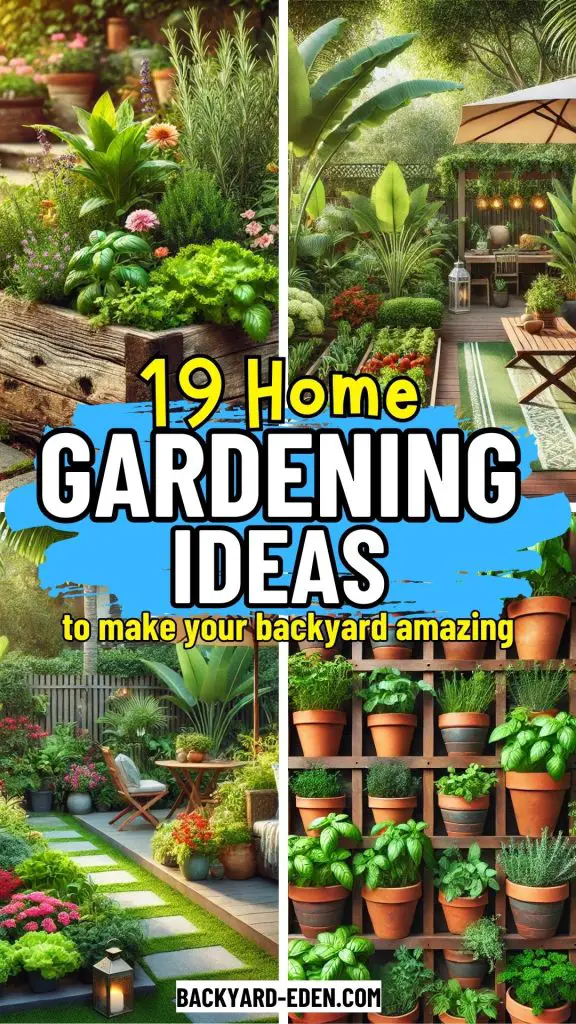
Choosing the Right Location
Selecting the perfect spot for your garden is crucial, as it directly impacts the health and productivity of your plants.
Consider factors like sunlight, soil quality, and accessibility when deciding where to place your garden beds.
You’ll want to conduct a Sunlight Analysis to determine how many hours of direct sunlight your garden will receive daily.

Most vegetables and fruits require at least six hours of direct sunlight, while flowers and herbs can thrive in partial shade.
Next, perform a Soil Testing to assess the pH level, nutrient content, and drainage of your soil.
This will help you choose plants that are compatible with your soil conditions or take necessary amendments to improve soil health.
Additionally, consider the accessibility of your garden location, ensuring it’s close to a water source and easily reachable for maintenance.
Selecting Easy-to-Grow Plants
Your garden’s success largely depends on the types of plants you choose, so focus on varieties that are naturally resilient and require minimal maintenance, such as leafy greens, cherry tomatoes, and zinnia flowers.
These easy-to-grow plants will give you easy wins and boost your confidence as a beginner gardener.
When selecting plants, review their profiles to guarantee they thrive in your local climate and soil type.
For instance, leafy greens like kale and spinach love cooler temperatures and well-drained soil, while cherry tomatoes need full sun and consistent watering.
Zinnia flowers, on the other hand, are heat-tolerant and drought-resistant, making them perfect for hot summer days.
By choosing plants that fit your garden’s conditions, you’ll reduce the risk of failure and enjoy a bountiful harvest.
Remember, starting small and focusing on easy-to-grow plants will help you build a strong foundation for your garden.
As you gain experience, you can experiment with more challenging plant varieties, but for now, stick to the winners that will make your gardening journey a success.
Building a Container Garden
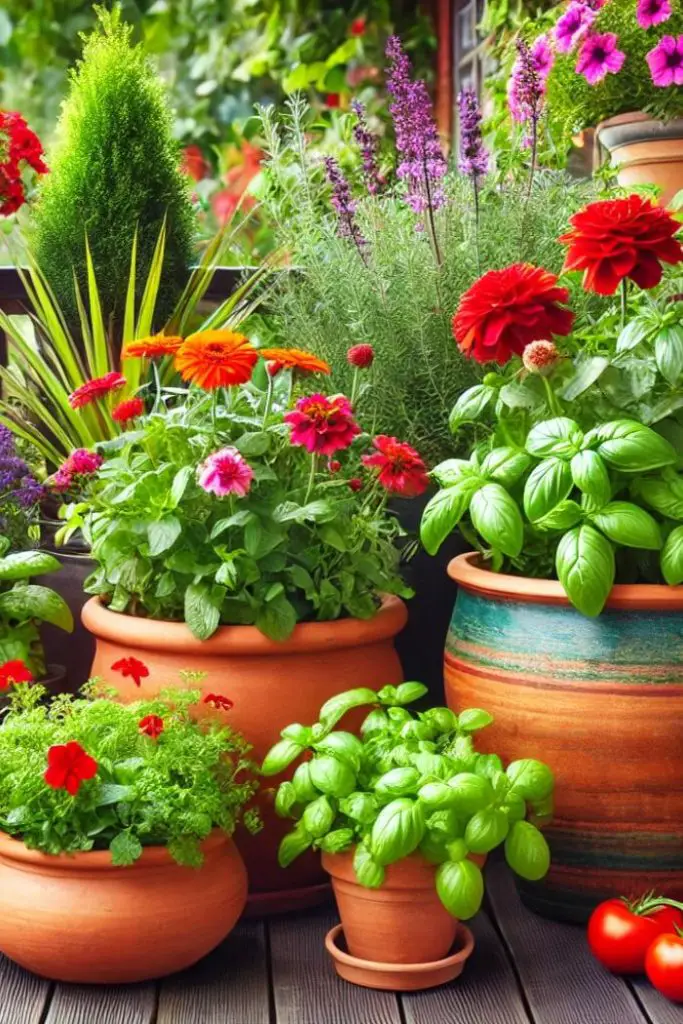
You can take your easy-to-grow plants to the next level by creating a container garden, which allows for greater flexibility and control over the growing conditions.
With a container garden, you can choose the perfect spot for your plants, regardless of the soil quality or sunlight availability in your yard.
When selecting container materials, consider durability, drainage, and aesthetics. Plastic, ceramic, and wooden containers are popular options, but make sure they’ve holes in the bottom for excess water to escape.
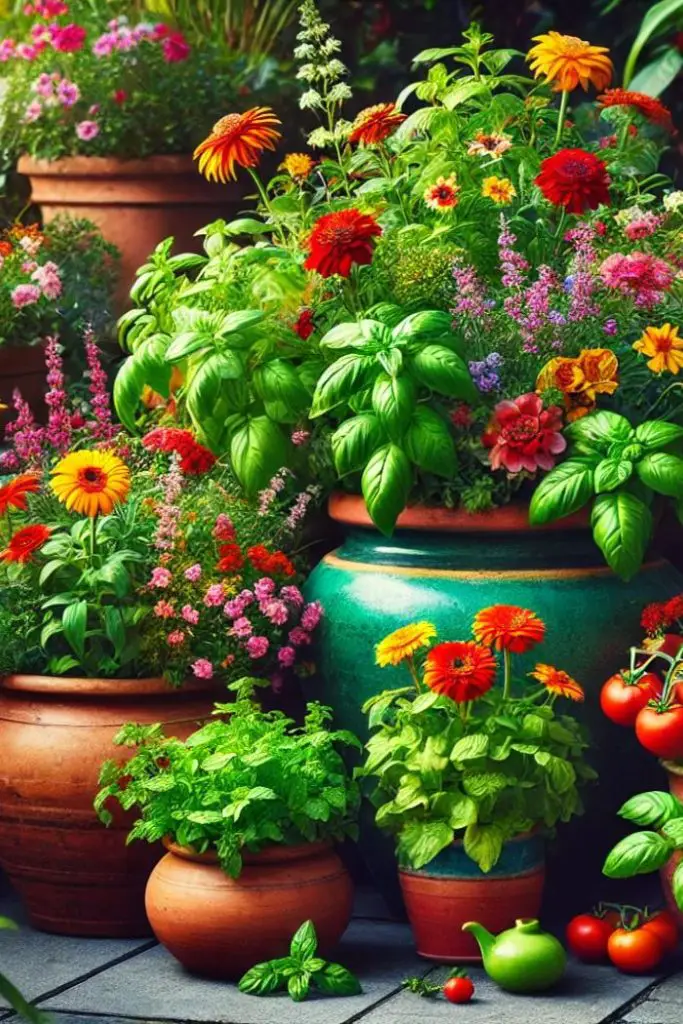
Before adding your plants, prepare the soil by mixing in organic matter like compost or peat moss to improve its structure and fertility.
This will give your plants a strong foundation for growth. When filling your containers, leave enough space for the soil to settle and for your plants to grow.
Avoid overwatering by checking the soil moisture daily.
With a little creativity and planning, your container garden will thrive, and you’ll be enjoying fresh herbs and veggies in no time.
Creating a Vertical Garden
By utilizing wall-mounted planters, trellises, or living walls, you can create a vertical garden that maximizes space and adds a decorative element to your outdoor or indoor area.
This innovative approach to gardening is perfect for small spaces, such as balconies, patios, or even indoor rooms with limited floor space.
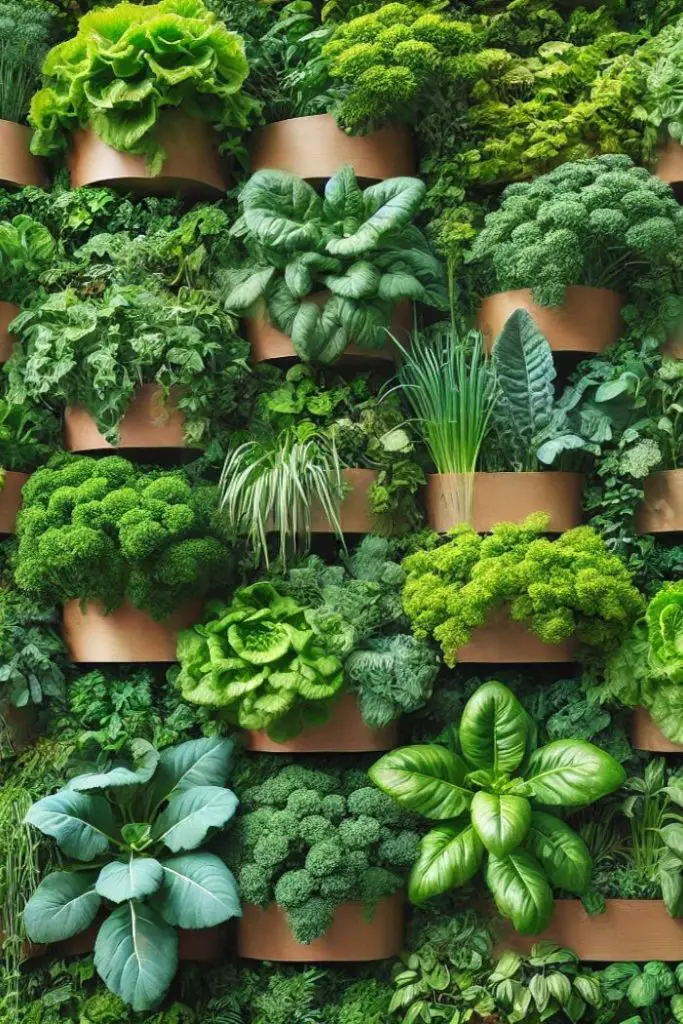
Vertical planters are a great option, allowing you to grow multiple plants in a compact space. You can choose from a variety of materials, such as wood, metal, or plastic, to suit your style and budget.
For a more rustic look, consider creating DIY trellises using wooden stakes, twine, or repurposed materials like old pallets or fencing.

These structures provide support for climbing plants like vines, ivy, or flowering plants, adding texture and visual interest to your vertical garden.
When selecting plants, choose varieties that thrive in vertical conditions, such as herbs, succulents, or ferns.
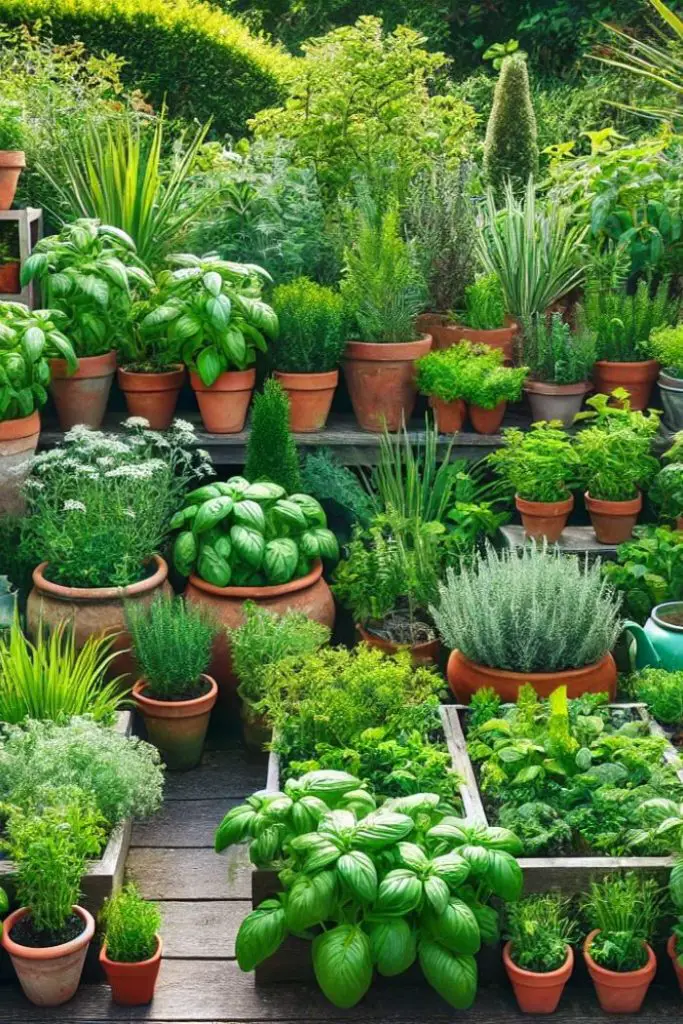
With a little creativity and planning, you can create a stunning vertical garden that not only saves space but also adds a touch of elegance to your home.
Designing a Small Space Garden
In small spaces, clever garden design is crucial, as every inch counts, and a well-planned layout can make even the tiniest area feel expansive and inviting.
When designing a small space garden, you’ll want to think vertically and horizontally to maximize every inch. Start by creating a garden map to visualize your space. Measure your area, and sketch out a rough layout, noting any obstacles or challenges.

Consider a small-scale design that incorporates multi-tiered planters, trellises, or wall-mounted gardens to add depth and visual interest.
As you plan, think about the flow of your garden. Create a focal point, like a statement piece of art or a showy planter, to draw the eye through the space.
Balance is key, so distribute plants and elements thoughtfully to avoid visual clutter. Don’t forget to leave some breathing room – a small space can quickly feel cramped.
Growing Your Favorite Fruits
When growing your favorite fruits, you’ll want to start by selecting the right fruit trees for your climate and available space.
You’ll need to ponder factors like soil type, sunlight, and watering needs to guarantee your trees flourish.
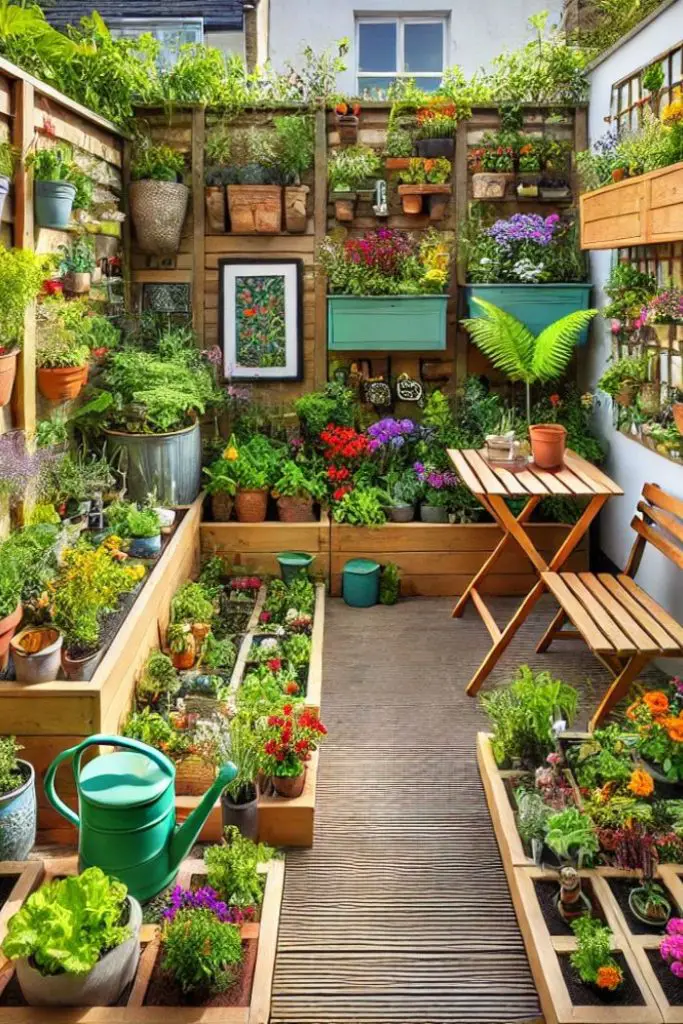
Fruit Tree Selection
Selecting the right fruit tree variety for your home garden is essential, as it determines the quality and quantity of harvest you’ll enjoy for years to come.
You’ll want to ponder factors like climate, soil type, and available space when choosing a fruit tree. For instance, if you live in a region with hot summers, you may want to opt for heat-tolerant varieties like peach or apricot trees.
Proper care, including regular tree pruning, is pivotal for promoting healthy growth and maximizing yields. Prune your fruit trees annually to maintain their shape, encourage air circulation, and allow sunlight to reach fruiting branches.
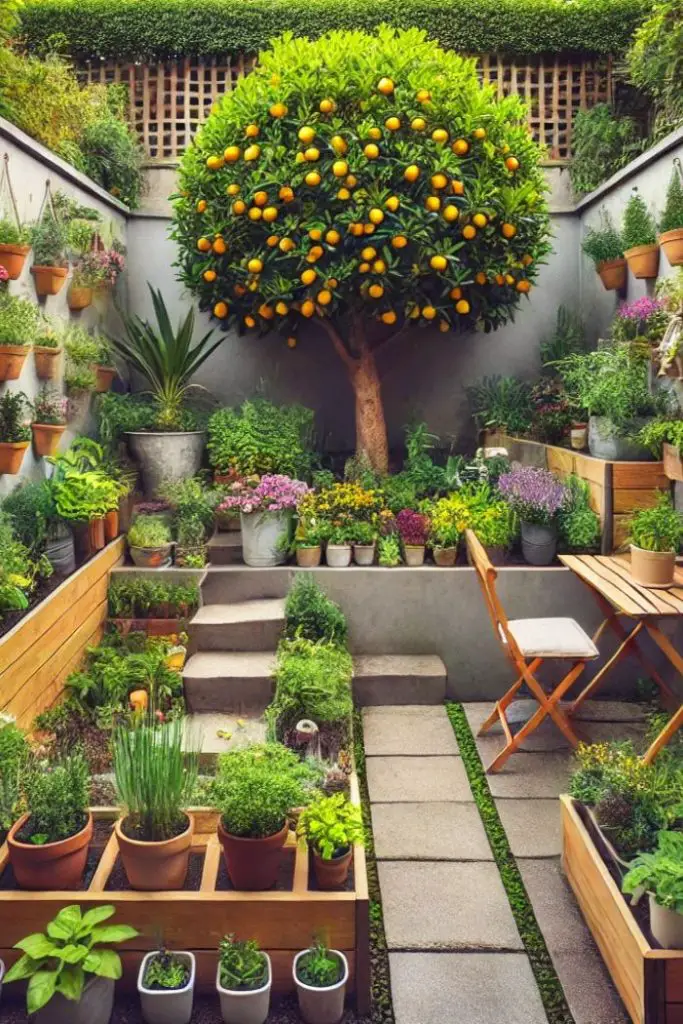
Additionally, fruit thinning is indispensable to prevent overloading branches and guaranteeing that remaining fruits receive sufficient nutrients and water. By thinning your fruit, you’ll enjoy larger, sweeter harvests.
Research the specific needs of your chosen fruit tree variety to guarantee you’re providing the best conditions for it to flourish. With the right selection and care, you’ll be enjoying fresh, delicious fruit from your backyard in no time!
Berry Bush Basics
Growing your favorite berries demands careful consideration of factors like sunlight, soil quality, and water availability, as these tiny fruits are notoriously finicky about their growing conditions.
For instance, blueberries and strawberries thrive in acidic soil with a pH between 5.5 and 6.5, while raspberries and blackberries prefer well-draining soil with a pH between 6.0 and 6.5.
When it comes to sunlight, most berry bushes require at least six hours of direct sunlight per day. However, some varieties like gooseberries and currants can tolerate partial shade.
Watering is also vital, as berry bushes need consistent moisture, especially during fruit production. Aim to provide about one inch of water per week, either through rainfall or irrigation.
Proper maintenance is also essential for healthy berry bushes. You’ll need to prune your bushes annually to promote new growth and encourage fruiting.
Berry pruning involves removing dead, diseased, or damaged branches, as well as thinning out the bush to allow for air circulation and sunlight penetration.
Additionally, regular bush fertilization with a balanced fertilizer will provide essential nutrients for ideal growth and fruit production.
Starting a Herb Garden
You can create a thriving herb garden by dedicating a small section of your outdoor space to a variety of fragrant, flavorful herbs that will elevate your cooking and add freshness to your home.
To begin, choose a spot that receives at least four hours of direct sunlight a day, and prepare the soil with a mix of compost and perlite for good drainage. Select a few easy-to-grow herbs like basil, mint, and cilantro to start with, and plant them in well-spaced rows.

As you tend to your herb garden, keep a herb journal to track your progress, note which herbs thrive, and identify any pests or diseases that may arise. This will help you refine your techniques and make adjustments for future seasons.
Don’t be afraid to explore different herb varieties and experiment with new recipes. Herb exploration can lead to exciting discoveries, such as the unique flavor profiles of lemon balm or the versatility of parsley.
Adding Decorative Elements
Four to six strategically placed decorative elements can transform your herb garden into a visually stunning oasis that invites relaxation and inspires creativity.
You can start by adding garden ornaments that reflect your personal style, such as a whimsical statue, a sundial, or a birdbath. These elements won’t only add visual interest but also create a sense of personality in your garden.
To take your garden to the next level, incorporate decorative accents that complement your herbs’ textures and colors.
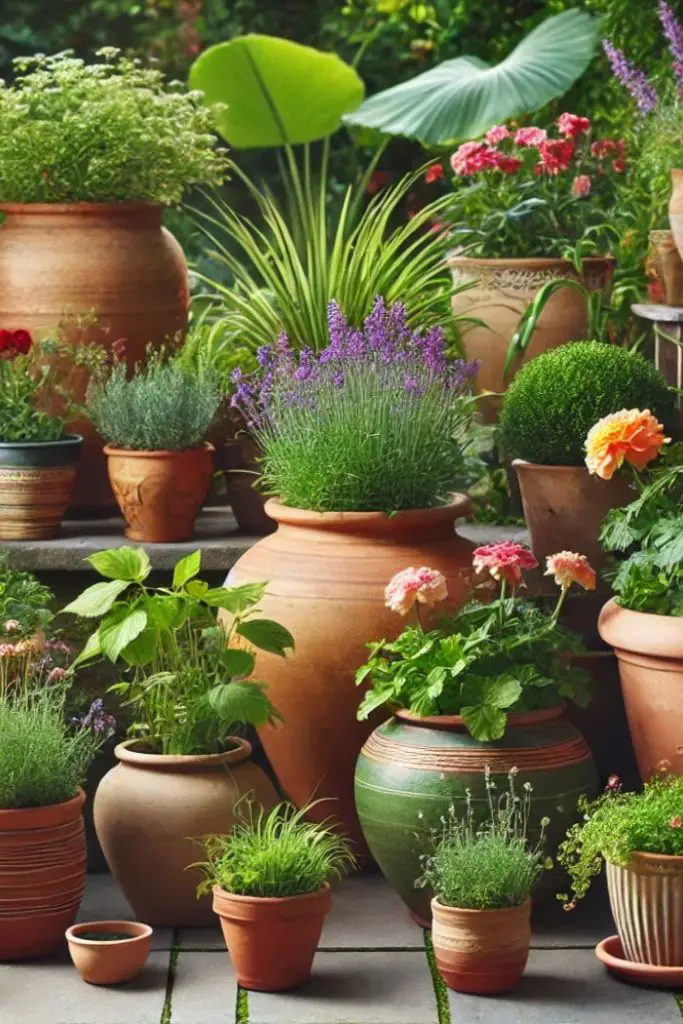
For instance, a rustic wooden planter can add warmth and coziness to your garden, while a modern metal trellis can provide a sleek, contemporary touch.
You can also use decorative accents like pebbles, shells, or marbles to create a beautiful mosaic pattern around your plants.
Remember, the key is to strike a balance between decoration and functionality. Don’t overdo it – you want your herbs to remain the stars of the show.
Making the Most of Shade
When creating a beautiful outdoor space, you’ll likely encounter areas that receive little to no direct sunlight.
Don’t let shade hold you back – with the right strategies, you can still create a stunning garden in these areas.
Shade-Tolerant Plant Options
Many gardens have areas that receive partial or full shade, and selecting the right plants can make all the difference in turning these spaces into thriving oases.
You’ll be surprised at the variety of shade-tolerant plants that can add color, texture, and interest to your garden. When it comes to perennials, consider shade-loving options like hostas, astilbe, and ferns. These plants aren’t only low-maintenance but also provide beautiful foliage and flowers.

For ground covers, you can’t go wrong with creeping thyme, vinca minor, or sweet woodruff. These plants are perfect for filling in gaps between pavers or stones and can tolerate foot traffic. They also require minimal care and can thrive in areas with limited sunlight.
Designing Around Obstacles
By cleverly designing around obstacles, you can turn shaded areas into stunning focal points that add depth and visual interest to your garden.
To do this, start with an obstacle assessment, identifying the specific challenges posed by the shade. Is it a large tree that blocks sunlight, or a north-facing wall that receives little direct light?
Once you’ve pinpointed the problem, you can begin brainstorming creative workarounds.
Consider incorporating shade-tolerant plants, like ferns or hostas, that thrive in low-light conditions.
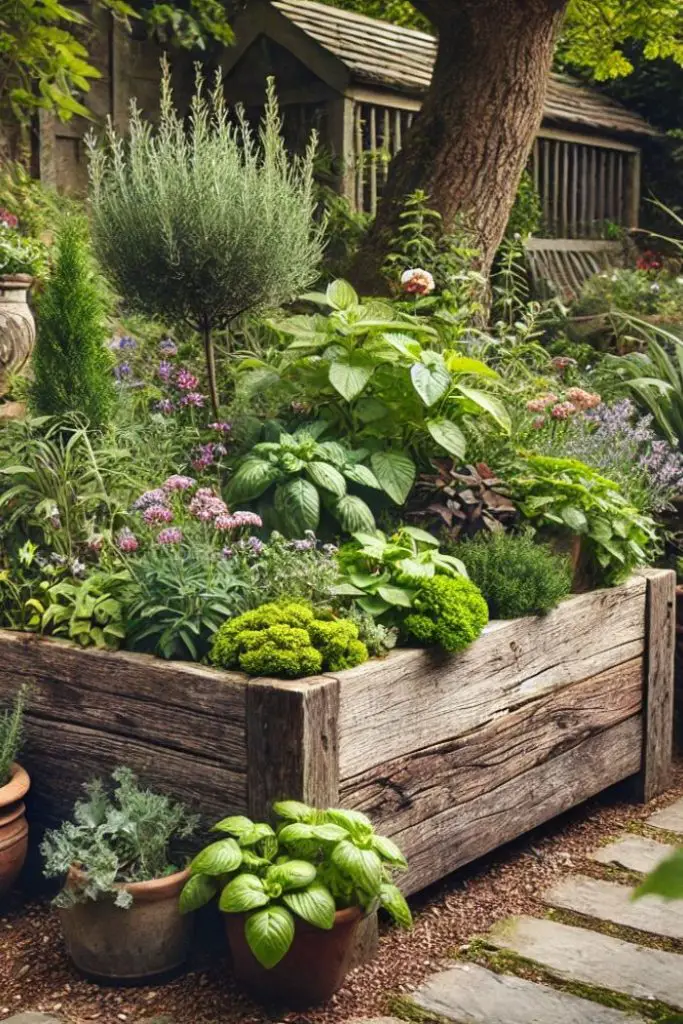
You can also use shade to your advantage by creating a cozy, intimate atmosphere. Add a bench or a small seating area to create a peaceful retreat.
Alternatively, use shade to hide unsightly areas, like utility meters or storage sheds.
By cleverly designing around obstacles, you can turn shade into an asset, rather than a liability.
With a little creativity, you can transform even the most challenging spaces into beautiful, functional areas that enhance your garden’s overall appeal.
Lighting for Ambiance
You can dramatically alter the ambiance of your shaded areas by strategically incorporating lighting that not only illuminates the space but also creates a warm, inviting atmosphere.
By using mood lighting, you can transform your shaded spots into cozy retreats that invite relaxation and conversation. Soft illumination can be achieved through the use of string lights, lanterns, or tabletop torches, which add a warm glow to your outdoor space.
To create a sense of ambiance, consider layering different light sources.
Start with overhead lighting, such as a pendant light or a chandelier, to provide overall illumination. Then, add table lamps or floor lamps to create pools of soft light. Finally, use candles or fairy lights to add a touch of whimsy and romance.
Companion Planting 101
Companion planting, a centuries-old practice, allows you to harness the natural relationships between different plants to create a more diverse, resilient, and productive garden.
By choosing the right plant companions, you can improve pest control and attract pollinators, ultimately boosting your garden’s overall health.
For instance, planting marigolds with tomatoes can deter nematodes, microscopic worms that can harm tomato roots.
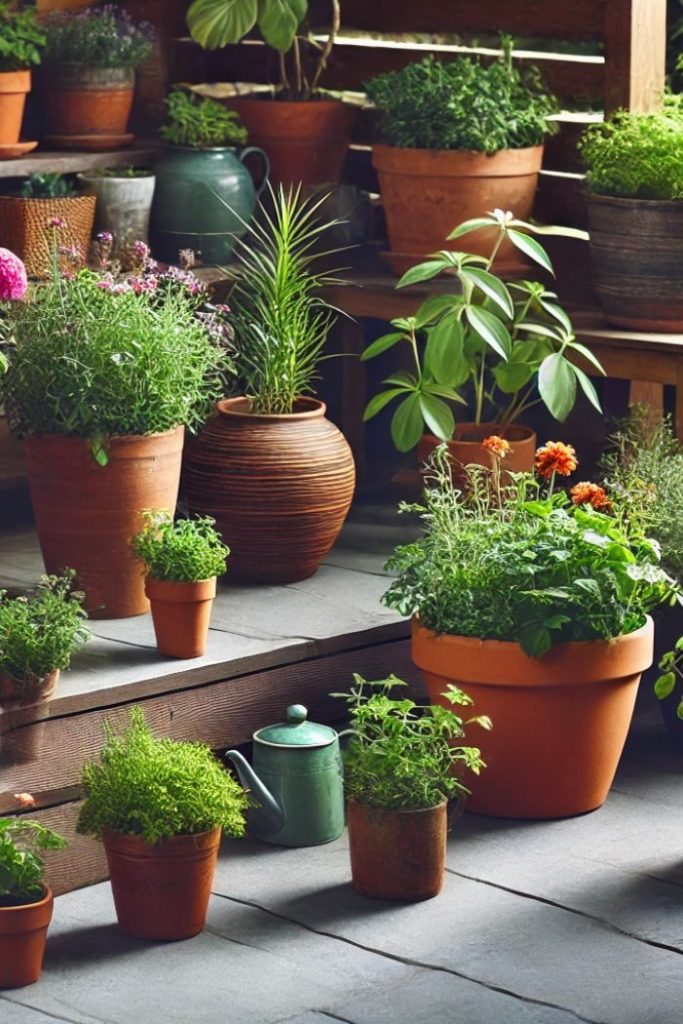
Basil and mint, known for their fragrance, can repel pests like aphids and whiteflies, while attracting beneficial insects like bees and butterflies.
You can also use companion planting to enhance growth and flavor.
For example, planting beans with corn and squash creates a symbiotic relationship, where the beans provide nitrogen, the corn offers shade, and the squash spreads its large leaves to retain moisture.
Gardening on a Budget

With a little creativity and resourcefulness, even the most budget-conscious gardener can cultivate a thriving and beautiful garden without breaking the bank.
One way to start is by selecting budget-friendly seeds that still pack a punch regarding flavor and nutritional value. Look for seeds that are specifically labeled as ‘economical’ or ‘value-priced’ at your local nursery or online. You can also consider saving seeds from previous harvests or swapping them with fellow gardening enthusiasts.
Another way to save money is by taking advantage of gardening coupons and discounts. Check online retailers, gardening clubs, and local nurseries for promotions and special offers. You can also sign up for newsletters and follow social media accounts to stay informed about upcoming sales and deals.
Additionally, consider buying gardening supplies in bulk or during off-peak seasons to get the best value for your money. By being mindful of your expenses and making a few savvy choices, you can create a stunning garden that fits your budget and exceeds your expectations.

Common Mistakes to Avoid
As you start or continue to tend to your garden, crucially, you must be aware of common mistakes that can hinder its growth and overall success.
You’ll want to steer clear of pitfalls that can be detrimental to your plants, and it all starts with understanding the importance of good soil quality and proper watering techniques.
Poor Soil Quality
You’ll often find that poor soil quality is the underlying culprit behind struggling plants, and vitally, you must identify the common mistakes that lead to this issue.
One common mistake is failing to test your soil pH levels, which can lead to nutrient deficiencies and poor plant growth.
Another mistake isn’t incorporating soil amendments, such as compost or manure, to improve soil structure and fertility.
Additionally, neglecting to add nutrient supplements can deprive your plants of essential micronutrients, leading to stunted growth and poor yields.
To avoid these mistakes, start by testing your soil pH levels and adjusting them accordingly.
Then, incorporate organic soil amendments to improve soil structure and fertility.
Consider adding nutrient supplements, such as nitrogen, phosphorus, and potassium, to provide your plants with the necessary nutrients for ideal growth.
By taking these steps, you’ll be able to create a fertile and healthy soil environment that supports thriving plants.
Incorrect Watering Techniques
Most gardeners unknowingly sabotage their plants’ chances of thriving by practicing incorrect watering techniques, which can lead to root rot, nutrient deficiencies, and a plethora of other problems.
You might be thinking, ‘But I’m watering my plants regularly, so what’s the issue?’ The problem lies in the frequency and amount of water you’re providing.
Overwatering is a common mistake that can cause waterlogged soil, which prevents roots from breathing and absorbing essential nutrients.
Check for overwatering signs like yellowing leaves, droopy stems, and a soft, mushy texture.
If you notice any of these symptoms, it’s time to reassess your watering schedule.
Start by watering your plants when the top inch of soil feels dry to the touch.
Avoid getting waterlogged soil by not watering again until the soil has had a chance to dry out slightly.
You can also check the moisture level by inserting your finger into the soil up to the knuckle.
Maintaining Your Garden
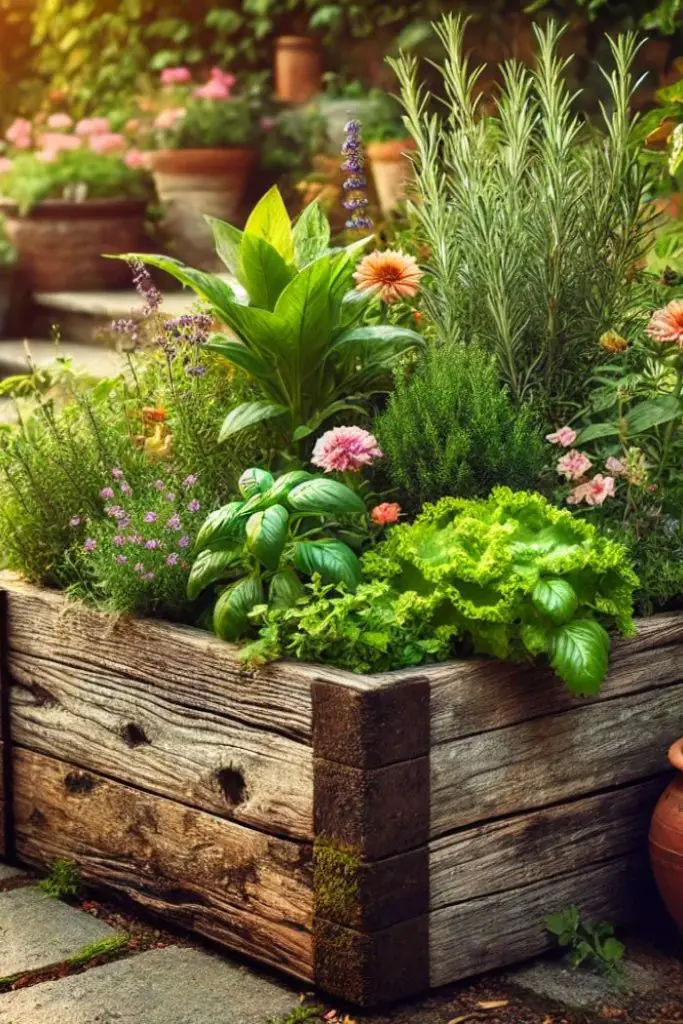
Regular watering, pruning, and fertilizing are essential to maintaining a healthy and thriving garden, and establishing a routine for these tasks will help you stay on top of your garden’s needs.
To make it easier, create a garden calendar to keep track of when to water, prune, and fertilize your plants. This will guarantee you don’t forget important tasks and help you identify patterns in your garden’s growth.
When it comes to watering, make sure to check the soil condition before you water. If the soil feels dry to the touch, it’s time to water.
Avoid overwatering, which can lead to root rot and other problems.
Pruning is also vital to maintaining a healthy garden. Remove dead or diseased branches to prevent the spread of disease and encourage new growth.
Finally, fertilize your plants regularly to provide them with essential nutrients. A balanced fertilizer will promote healthy growth and flowering.
Frequently Asked Questions
How Often Should I Water My Plants in Hot Weather?
‘When temperatures soar, you should water your plants more frequently, but don’t overdo it. Check soil moisture daily, and adjust your water schedules accordingly to prevent root rot and guarantee healthy growth.’
Can I Grow Plants in a Spot With Partial Shade?
You can grow plants in partial shade, but choose shade-tolerant varieties that thrive in low-light conditions. Consider the shade intensity, as some plants require more indirect sunlight than others, and adjust your plant selection accordingly.
Are All Gardening Gloves Suitable for All Types of Gardening?
You’ll find that not all gardening gloves are created equal; consider glove material options like waterproof neoprene or breathable mesh for ideal hand protection, as it’s vital to prioritize hand safety in various gardening tasks.
Can I Use Normal Potting Soil for Seed Starting?
You shouldn’t use normal potting soil for seed starting, as it can be too dense, causing poor drainage and low oxygen levels. Instead, opt for a seed starting mix that’s specifically designed for ideal seed quality and accommodates soil variations.
How Do I Keep Pests Out of My Garden Naturally?
You’ll want to plant pest repellent plants like basil and mint around your garden to deter unwanted critters, and use organic pesticides like neem oil to keep them at bay without harming the environment.
Conclusion
You’ve made it!
With these beginner-friendly gardening ideas, you’re well on your way to creating a lush oasis in your backyard.
Remember to monitor your progress, learn from your mistakes, and enjoy the journey.
As your garden flourishes, so will your confidence.
Happy gardening!


